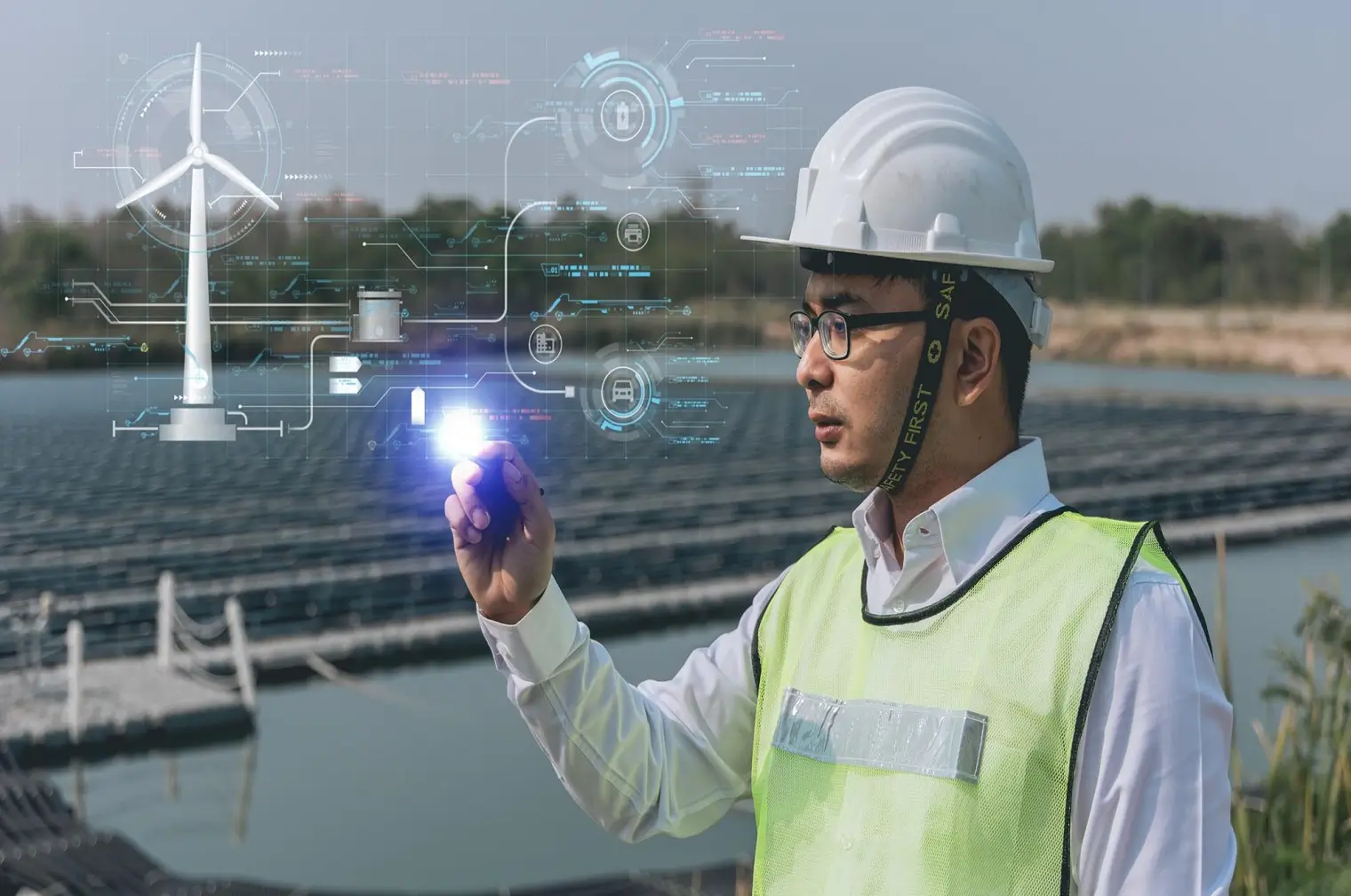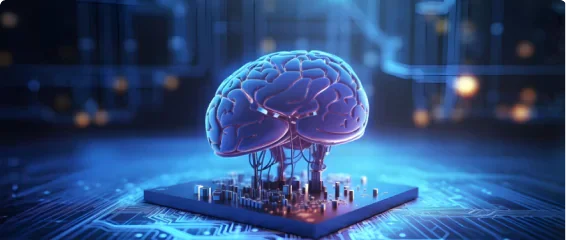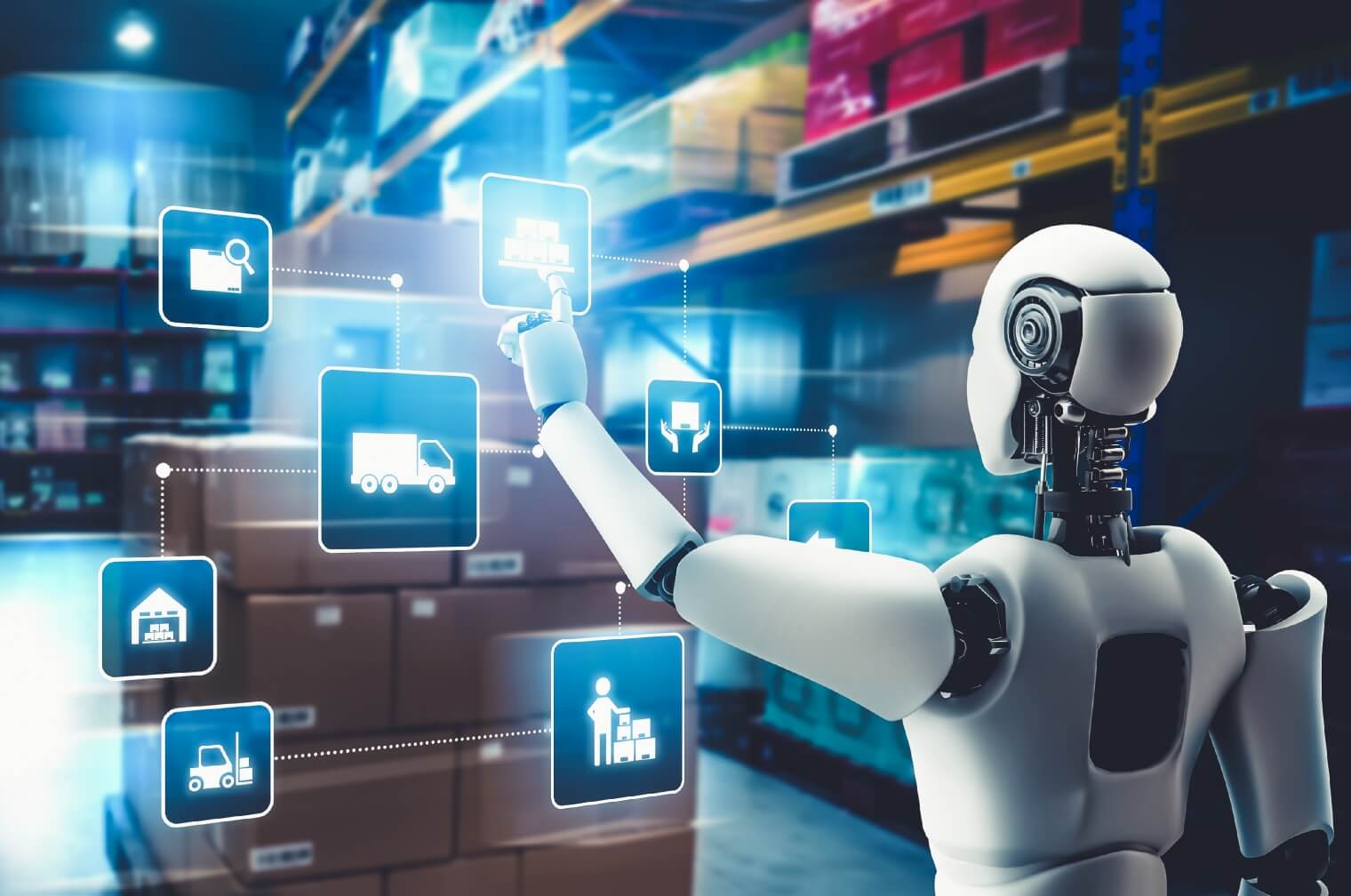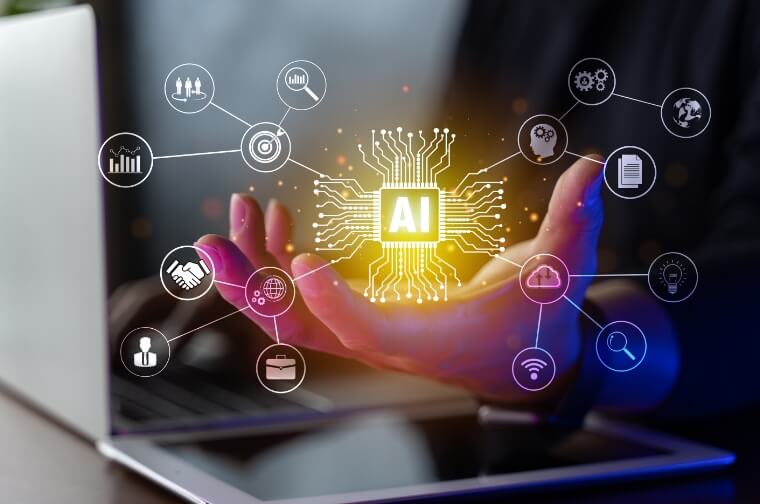Machine Learning and AI for revolution of Tech Companies are changing and streamlining businesses.
Artificial intelligence is rapidly reshaping industries worldwide, and the energy and utilities sector is no exception. According to a report by PwC, AI has the potential to unlock $15.7 trillion in the global economy in 2030.
Integrating AI solutions is driving significant transformation in the energy and utilities sector. By leveraging advanced algorithms and machine learning techniques, companies can optimize operations, reduce costs, and enhance sustainability efforts. This shift toward digital transformation is essential for energy and utility providers to stay competitive and meet the evolving needs of a rapidly changing world.
The Role of AI in Energy and Utilities
Artificial intelligence is rapidly becoming a powerful tool for addressing complex challenges in the energy and utilities sector. According to the U.S. Department of Energy, AI has the potential to make significant contributions to the development of a modern electrical grid and a clean energy economy.
This innovative technology offers a range of benefits for energy and utility companies, helping them address critical industry issues. Let’s delve deeper into how AI is paving the way for a more efficient, cost-effective, and sustainable energy landscape.
Benefits of AI for a Brighter Energy Future
The energy and utilities sector faces many challenges, such as:
- Demand forecasting: Accurately predicting energy demand is crucial for efficient resource allocation.
- Asset management: Maintaining aging infrastructure and ensuring equipment reliability is a constant concern.
- System optimization: Optimizing energy distribution and grid management is essential for minimizing losses and outages.
AI, with its advanced analytical capabilities, offers solutions to these challenges:
- Demand Prediction: AI algorithms can analyze historical data, weather patterns, and consumer behavior to forecast energy demand with greater accuracy. This allows utilities to optimize power generation and distribution, reducing costs and preventing blackouts.
- Smart Asset Management: AI-powered systems can monitor equipment performance in real time, identifying potential problems before they occur. This proactive approach minimizes downtime, extends asset lifespan, and lowers maintenance costs.
- System Optimization: AI can analyze complex data sets to optimize energy flow across the grid. This helps to minimize energy losses during transmission and distribution, leading to greater efficiency and cost savings.
Custom AI Solutions: A Tailored Approach
AI can be used in many ways and we can customize it accordingly. While the AI applications in the energy sector listed above are broad, custom AI solutions can be tailored to address specific challenges faced by individual energy and utilities companies.
Here are some examples:
- A utility company can implement an AI-powered system that analyzes smart meter data to identify high-energy consumption patterns. This information can then be used to create personalized energy-saving recommendations for customers.
- A renewable energy provider can use AI to forecast wind and solar power generation, allowing them to integrate these variable sources more effectively into the grid.
- A distribution company can leverage AI to predict and prevent equipment failures, minimizing disruptions and improving service reliability.
By embracing custom AI solutions, energy and utility companies can unlock a spectrum of benefits, enhancing their operations, reducing costs, and contributing to a more sustainable future.
Transform Energy Operations with AI Solutions
Explore how ViitorCloud empowers energy and utility businesses with cutting-edge AI solutions.
Smarter Electricity Grids with AI
The traditional electricity grid is undergoing a transformation, fueled by the power of AI. This shift towards smarter electricity grids promises a more reliable, efficient, and sustainable energy infrastructure. 74% of energy companies are embracing AI for their use.
AI plays a pivotal role in creating these smarter grids by leveraging its analytical prowess in two key areas:
Enhanced Grid Planning and Resilience
- Predictive analytics, a cornerstone of AI, allows for more informed grid planning. AI algorithms can analyze vast amounts of data, including historical usage patterns, weather forecasts, and real-time sensor readings.
- This data helps utilities anticipate future energy demands and potential grid weaknesses. By proactively identifying vulnerabilities, they can take preventive measures such as upgrading infrastructure or deploying distributed energy resources to strengthen the grid’s resilience against outages and disruptions.
Real-Time Data and Optimization
The integration of smart meters and sensors across the grid generates a constant stream of real-time data on energy consumption and grid conditions.
AI can analyze this data instantly, enabling utilities to:
- Optimize energy flow in real-time, minimizing energy losses and maximizing efficiency.
- Respond quickly to changes in demand or disruptions, ensuring a more stable and reliable power supply for consumers.
These capabilities of AI align perfectly with initiatives like the Grid Modernization Initiative (GMI), launched by the U.S. Department of Energy. GMI aims to future-proof the nation’s electrical grid infrastructure by promoting the adoption of advanced technologies like AI.
By embracing AI and collaborating with initiatives like GMI, energy and utilities companies can build smarter, more resilient grids. This will ensure reliable power delivery and also pave the way for a more sustainable future by facilitating the integration of renewable energy sources.
AI-Powered Energy Management Systems
The rise of AI brings a powerful tool to the energy and utilities sector: AI-powered energy management systems (EMS). These intelligent systems are revolutionizing the way we manage energy consumption, offering a path toward greater efficiency, resource optimization, and reduced emissions.
What are AI-powered EMS?
Think of AI-powered EMS as the hub for your energy usage. These systems use AI to analyze large amounts of data from smart meters, sensors, and other sources.
This data can include:
- Real-time energy consumption patterns
- Historical usage trends
- Weather forecasts
- Equipment performance data
By analyzing this data, AI-powered EMS can:
- Monitor and control energy usage in real-time, identifying areas for optimization.
- Predict future energy demand, allowing utilities to proactively allocate resources and avoid disruptions.
- Optimize energy distribution across the grid, minimizing losses and ensuring efficiency.
Benefits for a Sustainable Future
The advantages of AI-powered EMS extend far beyond simple cost savings.
Here are some key benefits:
- Reduced energy consumption: With AI providing insights and recommendations, companies and consumers can actively manage their energy use, leading to significant reductions in overall consumption.
- Optimized Resource Allocation: Utilities can optimize their resource allocation based on real-time demand, resulting in lower operational costs.
- Reduced Emissions: By reducing energy waste and optimizing resource allocation, AI-powered EMS contribute to a cleaner and more sustainable energy future.
These benefits are driving the rapid adoption of AI-powered EMS in the energy and utilities sector. As AI technology continues to evolve, we can expect even more sophisticated systems that further enhance energy efficiency and contribute to a greener tomorrow.
Optimize Utilities with Advanced AI Solutions
Leverage tailored AI solutions to improve efficiency and sustainability in energy and utilities.
Smart Meters and Advanced Data Analytics
Smart meters, paired with the power of advanced data analytics, are transforming how we understand and manage energy consumption. These intelligent devices act as the eyes and ears of the energy grid, providing real-time data on energy usage with unprecedented detail.
AI-driven Smart Meters: Capturing Real-Time Energy Data
Estimated bills based on past averages are now a thing of the past. Smart meters, equipped with AI capabilities, continuously collect data on energy consumption.
This detailed data includes:
- Real-time energy usage: Track your energy consumption by the hour, day, or week, allowing you to identify peak usage periods and potential areas for reduction.
- Appliance-level data: (with your consent) Some smart meters can even provide insights into the energy consumption of individual appliances, helping you identify hidden energy drains.
- Power quality metrics: Monitor voltage fluctuations and other power quality issues that can impact equipment performance.
Advanced Analytics: Transforming Data into actionable Insights
Data from smart meters becomes even more valuable when combined with advanced analytics.
AI can use this data to:
- Identify energy usage patterns: Understand how your energy consumption varies throughout the day, week, and year.
- Predict future demand: Anticipate peak usage periods and prepare the grid to meet demand efficiently.
- Improve billing accuracy: Eliminate estimated bills and ensure your energy bills reflect your actual usage.
Benefits Beyond the Meter: Customer Engagement and Operational Efficiency
The impact of smart meters and advanced data analytics extends beyond simply providing real-time data.
Here are some additional benefits:
- Customer Engagement: Consumers empowered with data-driven insights can make informed decisions to optimize their energy consumption.
- Operational Efficiency: Utilities can use smart meter data to improve grid management, optimize resource allocation, and reduce operational costs.
The combined power of smart meters and advanced data analytics paints a clear picture of energy usage, empowering both consumers and utilities to make informed decisions for a more efficient and sustainable energy future.
Grid Modernization and Resilience
The reliable delivery of electricity is essential for modern life. However, aging infrastructure and the increasing integration of renewable energy sources pose challenges for the traditional grid. This is where the Grid Modernization Initiative (GMI) comes in. This initiative, spearheaded by the U.S. Department of Energy, aims to future-proof the nation’s electrical grid by promoting the adoption of advanced technologies like AI.
AI as the Backbone of Grid Resilience
AI plays a crucial role in achieving the goals of GMI and building a more resilient grid.
Here’s how AI lends its power:
- Enhanced Fault Detection and Response: AI algorithms can analyze data from sensors and smart meters across the grid to detect potential faults and equipment failures in real time. This allows for faster and more targeted repairs, minimizing outages and downtime.
- Predictive Maintenance: Transform predictive maintenance in energy by analyzing historical data and equipment performance, AI can predict potential issues before they occur. This enables utilities to conduct preventive maintenance, preventing major breakdowns and ensuring uninterrupted power supply.
- Optimized Energy Distribution: AI can analyze real-time data on energy demand and generation across the grid. This enables utilities to optimize energy distribution by directing power flow efficiently and minimizing losses.
The Future of Grid Resilience: Powered by AI
The integration of AI into grid modernization efforts paves the way for a more resilient and sustainable energy future.
Here’s a glimpse of what we can expect:
- Self-healing grids: AI-powered systems will be able to autonomously identify and respond to grid issues, minimizing disruptions and ensuring a more reliable power supply.
- Enhanced integration of renewables: AI can help optimize the integration of renewable energy sources like solar and wind into the grid, accommodating their variable nature and ensuring a stable energy supply.
- Improved cyber security: AI can be used to detect and prevent cyberattacks on the grid, protecting critical infrastructure and ensuring the smooth operation of the energy sector.
Revolutionize Energy Management with AI
Partner with ViitorCloud to unlock the potential of AI solutions for smarter energy and utility strategies.
AI for Renewable Energy Optimization
Renewable energy sources like solar and wind offer a clean and sustainable alternative to traditional fossil fuels. However, their variable nature can pose challenges for energy grids. Here’s where AI steps in, playing a pivotal role in optimizing renewable energy sources for utility companies.
Optimizing Renewable Energy with AI
AI algorithms excel at analyzing vast amounts of data, making them ideal for optimizing the use of renewable energy sources.
Let’s explore how AI contributes:
- Improved Forecasting: AI can analyze historical weather data, environmental factors, and consumption patterns to predict solar and wind power generation with greater accuracy. This allows utilities to integrate these variable sources more effectively into the grid and minimize reliance on fossil fuels.
- Balancing Supply and Demand: A key challenge in integrating renewables is managing the fluctuations between supply and demand. AI can analyze real-time data on energy generation and consumption, enabling utilities to adjust grid operations and energy storage systems to maintain a stable power supply.
- Smart Energy Storage Management: Energy storage systems play a crucial role in balancing the grid and maximizing reliance on renewables. AI can optimize the charging and discharging of energy storage systems, ensuring they are ready to meet peak demand periods.
Custom AI Solutions for Sustainability
The beauty of AI lies in its adaptability. Custom AI solutions can be tailored to address specific challenges faced by individual energy.
- A utility company with a large solar farm can leverage AI to optimize panel positioning based on historical sun patterns, maximizing energy production.
- A wind farm operator can use AI to predict high-wind events and prepare the grid to handle surges in power generation.
- An energy provider with a mix of renewable and traditional sources can utilize AI to create dynamic energy mixes that minimize reliance on fossil fuels and optimize sustainability goals.
By leveraging advanced AI integrations and solutions, Energy and utility companies can unlock the full potential of renewable energy sources, contributing significantly to achieving a cleaner and more sustainable energy future.
Drive Innovation in Energy with AI Solutions
Enhance decision-making and streamline operations in energy and utilities with expert AI services.
Conclusion
ViitorCloud is at the forefront of providing advanced AI solutions that are reshaping the energy and utilities sector. Our AI-driven systems help optimize operations, improve grid resilience, and promote the integration of renewable energy, empowering your business to meet efficiency, cost-saving, and sustainability goals. As the industry continues its digital transformation, we are here to guide energy and utility companies through the complexities, offering custom solutions that drive innovation and future-proof operations.
Want to make your energy business more efficient and eco-friendly? Contact ViitorCloud to build AI solutions for the energy and utilities sector. Also, we invite you to connect with us on LinkedIn for professional engagement and networking opportunities.
Frequently Asked Questions
AI solutions optimize operations by improving grid efficiency, predicting equipment maintenance needs, and reducing energy waste. These benefits translate to cost savings, improved reliability, and enhanced customer satisfaction.
Smart meters with AI continuously collect detailed data on energy use, enabling real-time monitoring and more accurate billing. This data also supports predictive analytics, helping utilities better manage demand and prevent outages.
Data security is a top priority in AI deployments. Reputable AI solutions include robust encryption, secure data storage, and strict access controls to ensure compliance with regulatory standards and protect customer data.









